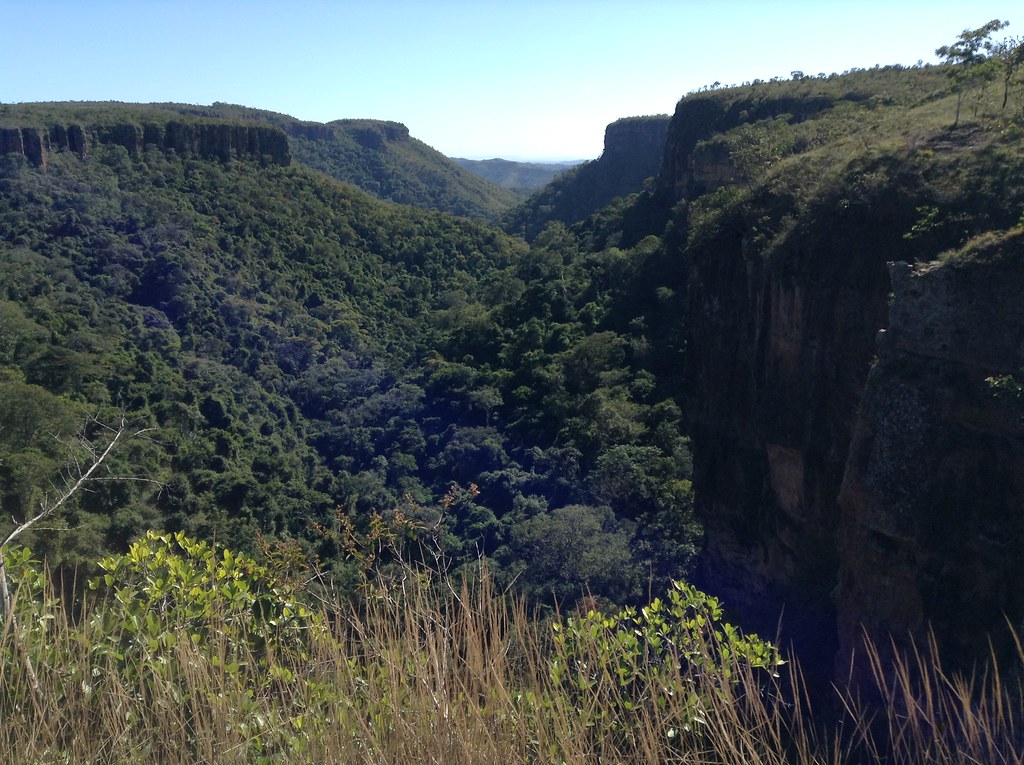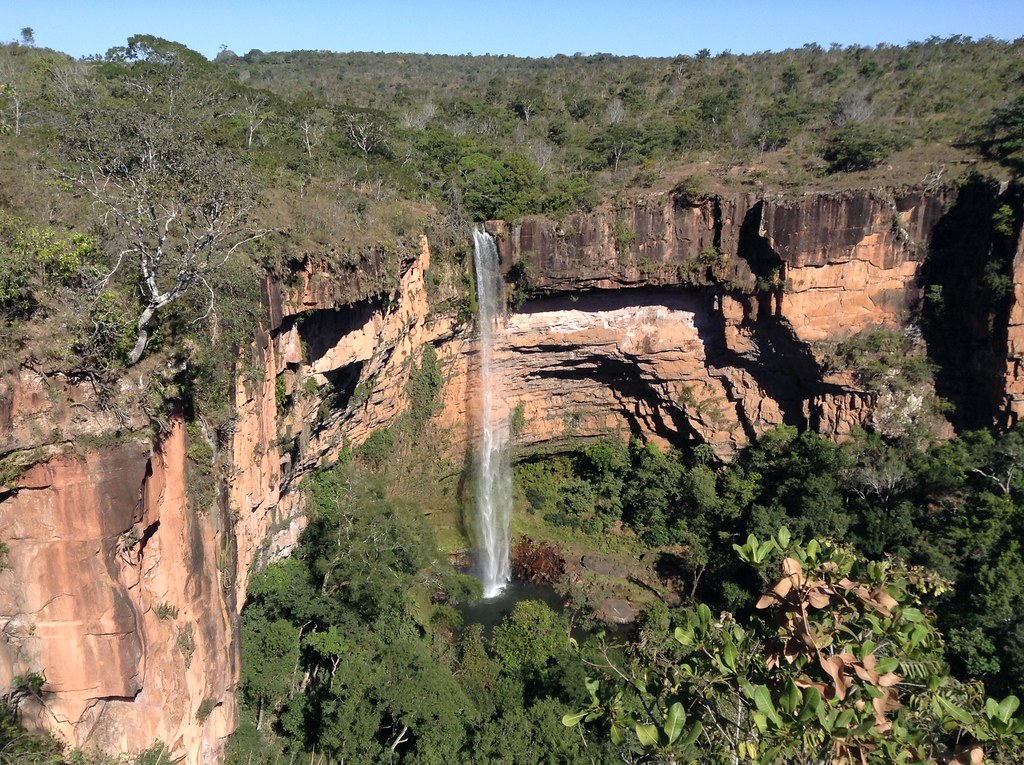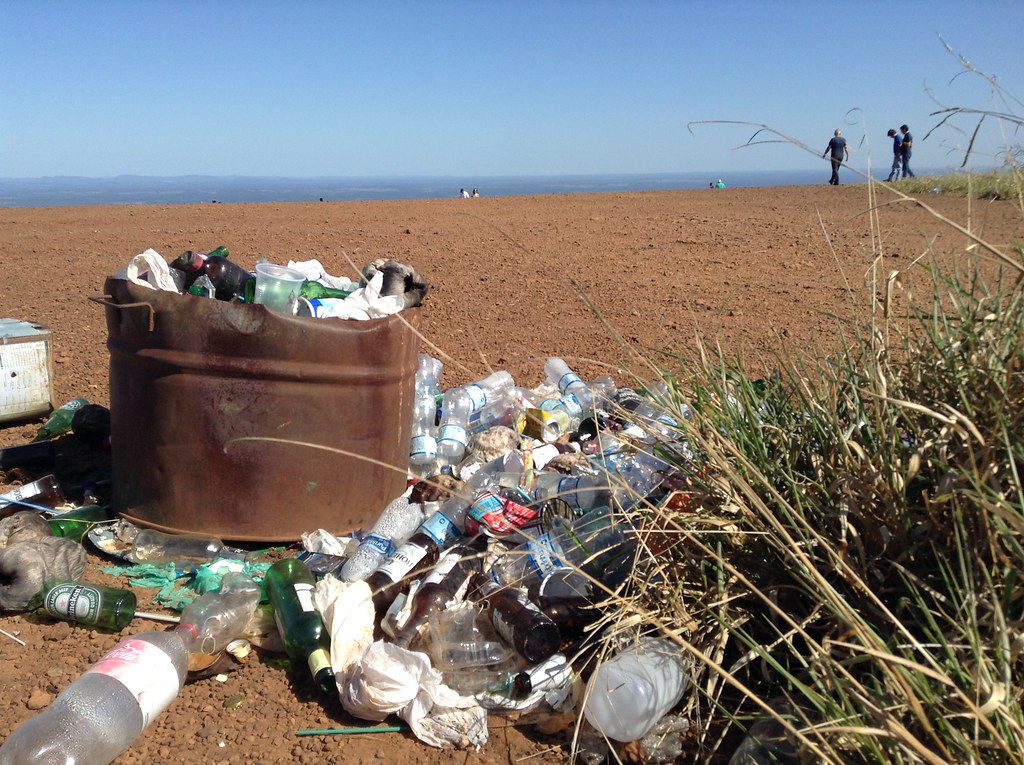
While in Brazil’s interior state of Mato Grosso researching a story for the next issue of Americas Quarterly, I took the chance to visit the national park Chapada dos Guimarães. It’s about an hour outside state capital Cuiabá, not far from the international border with Bolivia. As my editor told to me, “everyone in Cuiabá talks about it as if it were the promised land.” Even back in Rio, friends told me to visit the famed chapada (plateau) and called it Brazil’s version of the Grand Canyon, though none had actually visited it themselves.
So one morning, I hopped on a bus and drove the 90 minutes out to the national park. Cuiabá is surrounded by a hot, swampy plain called the Pantanal, which is the world’s largest tropical wetland area. It’s a lush, diverse region of jaguar, wild boar, and tapir (the continent’s largest land mammal, kind of like a giant anteater, which I saw one night stealing vegetables from a farmer’s garden).
As we motored across the parched flatlands, through the haze appeared the 2,000-foot tall red sandstone cliffs of Chapada dos Guimarães. The interior of my bus seemed to grow hotter and stuffier as the engine worked overtime to motor us up the steep, winding road to the top of the plateau, where we were dropped off in a dusty touristy town also called Chapada dos Guimarães.
It was 11am. I wanted to see the park, which is tightly regulated (most Brazilian parks are) and you can’t go inside without an official guide. So I went to a guide shop. I was then told the entire park had already closed to visitors because the midday sun is too dangerously intense. So instead of hiking, I hopped on the back of a motorcycle taxi and sped around to some prominent vistas.

At first this was fun. Whizzing through the countryside on the back of a stranger’s motorcycle reminded me of how I often got around Cambodia, where I lived for a few years. But it quickly became apparent that my driver was a little too eager to finish our tour as quickly as possible. He zoomed down the speedbump-strewn roads, screeching to a halt just before we’d hit each bump, forcing me to grip the motorcycle frame tightly to keep from falling off. It was literally a white-knuckle tour.
I saw a famous waterfall called Veu De Noiva (Bride’s Veil):

Unfortunately, even at the most beautiful areas of Brazil, people aren’t too concerned about leaving their trash behind…

The park is nice, but it’s not the promised land, especially compared to the other spectacular places in Brazil such as Foz do Iguaçu and the Amazon.
Back in the town of Chapada dos Guimarães, at a little market on the central square, I found a vendor selling old records. I perused the collection and picked up a four-decade-old album by the Brazilian greats Caetano Velosa, Gilberto Gil, and Gal Costa.
Later that night, I tweeted a photo of the record, and Gal Costa herself “liked” my message — which totally made up for my somewhat underwhelming visit to Chapada dos Guimarães.
excited to play this 1974 record Temporada de Verão of @caetanoveloso @gilbertogil and @GalCosta that I found in MT pic.twitter.com/tQQ69z6J74
— Stephen Kurczy (@StephenKurczy) July 6, 2016
